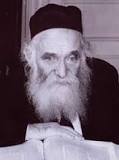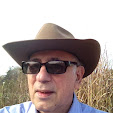HAKARAT
HATOV: GRATITUDE FOR FINDING MY OWN VOICE, THE INFLUENCE OF STRONG
MENTORS AND LEADING THE DAF YOMI SIYUM ON TRACTATE KESUBOS
Courtesy of Chabadwestside.org
As
many of you know, I spent two weeks in intensive care at Yale New
Haven Medical Center about 18 months ago.
This
event was the culmination of living over 7 years with a very
noticeable speech defect. After speaking several sentences, I found
my speech garbled, slurred and extremely nasal.
I
made frequent visits to doctors and, to my frustration, was told that
they could not find any physical cause for my condition.
I
was referred to a neurologist at New York Medical Center who put me
on a medication that only exacerbated my condition.
Then
one Shabbat afternoon, I could not swallow, could not eat and could
not breathe. My coughing was incessant and so I went immediately to
Greenwich Hospital. Three teams of doctors were called in.
The
next scene I remember is that I awoke, intubated, with Misha Guy at
my side telling me that I was in New Haven.
I
wish to thank Misha for visiting me daily and for the long
'conversations' we had by means of my writing my thoughts on notepad
paper.
I
wish to thank Yuval Sinai, a remarkable Professor of Jewish Law at
Yale, for his visits.
I
wish to thank Dr. Wolfsohn for his uplifting visits in which he
reassured me that fortunately I was at the right place at the right
time.
And
I wish to thank Danny Kraus for going out of his busy, busy way to
visit me as well.
And,
of course, I am forever grateful to Rabbi Walk and Rabbi Cohen and
our morning Minyan congregants for their fervent daily prayers and
Psalms on my behalf-- until I returned-- healed-- to join this
special group!
Above
all, I wish to thank the Neurology and Pulmonary teams at Yale who
successfully put me on the road to a full recovery.
So,
a year later, to my amazement, I am leading the Friday Daf Yomi
session and today, this Siyum on Tractate Kesubos.
I
have developed a strong appreciation of the precious Middah or
character trait of gratitude or HAKARAT HATOV. And I am especially
indebted to such strong family members, work associates and above all
teachers at The Ramaz School, A.B. Davis High School in Mt. Vernon,
NY, Columbia University (where I hold both an undergraduate in
Pre-medical sciences and a graduate degrees in John Milton and 17th
Century Prose and Poetry), Golden Gate University School of Law
(where I earned my JD degree) and at CAS--teachers whose exemplary
lives continue to reverberate with me.
You
may visit my website at RichardJSchwartz.com, and then click on the
Blog icon which will take you to my blog homepage (My blog contains
over 500 articles); here on my homepage you can read an article
entitled My Passion for Mentoring Modeling and Motivating.
Here
I explore, in depth, the many charismatic figures who exemplified the
strong Mussar, the strong code of conduct that I try--often falling
short--to live up to every day.
In
the handouts on your table, you will find the front cover from the
New York Post, dated Saturday April 13, 1935. The Banner Headline
reads New York's Ghetto Prepares for Observance of Passover.
The
image of Mayor La Guadia's wife is at the center and that of my
grandfather Rabbi Moses Kalonymus Skinder is at the right.
Descended
from a long line of Rabbis, he was educated, ordained and served as
Rabbi at the Yeshiva of Lutsk. He then served as Rabbi in Glasgow,
Scotland before being offered a pulpit in New York City.
He
was installed as spiritual leader of the Pike Street Synagogue, also
called the Sons of Kalwarie, (Kalvarier) on Manhattan's Lower East
Side.
He
served as the prominent Rabbi of his community from 1922-1947, a 25
year span, until he elected to step down from his pulpit to make
Aliyah to Palestine in September 1947.
At
his Synagogue, the Young Israel movement was announced by Rabbi Judah
L. Magnes, Z”L, to a standing room crowd of 10,000 Shabbat
worshipers in 1912. Rabbi Magnes would become the first chancellor of
the Hebrew University in 1925.
Rabbi Judah L Magnes
from Wikipedia
And
it was here that the Hesped of Rav Aharon Kotler, Z”L, of Lakewood
was held on 2 Kislev 5722 (1962) as 40,000 mourners overflowed into
the streets.
Rabbi Aharon Kotler
from Wikipedia
My
grand father was the Mashgiath for the Stuhmer's Baking Company and
joined Mrs. LaGuardia in handing out baked matzoh to thousands of
poor Jews on East Broadway.
A
total of 60,000 pounds of Lechem Oni was provided free of charge
by George F. Stuhmer to the indigent Jews in New York City's five
boroughs Newark, Jersey City and Hoboken.
Each
recipient received a five pound box.
These
homes were for the thousands of workers flooding the new State of
Israel from the European DP (Displaced Person) camps just after WW
II.
He
died on mission on 18 Cheshvan 5711.
It
is not the destination that matters but the journey.
My
grandfather brought 7 of his fellow Rabbis to my Brit Milah held at
the Bronx Hospital where I was born on May 24 (16 Iyar) the Hebrew Calendar year of
5700.
The Bronx Hospital, 169th and Fulton Street
Where my dad, Dr. Saul A.Schwartz delivered me
My
journey, since then, has included over 40 USA residences in both
Northern and Southern California, Oregon, Texas, Potomac, Md, New
Jersey, 4 New York Boroughs, Westchester County and finally Connecticut.
So
here I am to celebrate my continuing journey including but not
limited to rediscovering my new found voice and the influence of great
mentors near and far-- such as my grandfather Rabbi Skinder.
Most
immediately I am honoring our Daf Yomi's class finishing 112 pages (consisting of 13 Chapters) of
Tractate Kesubos, the laws of which we studied for nearly four
months.
Samuel Hirszenberg, Talmudic School, c. 1895-1908
From Wikipedia
The
tractate covers all the laws of the Kesubah, the marriage contract
which contains the legal commitments of the the husband to his wife.
The
foremost feature is the payment awarded to her in the event of
divorce or his death.
We
began our study with a Chapter that fixes the week-days on which
marriages are to be solemnized, the minimum amount of the Kesuba to
which virgins, widows, divorcees, or other women belonging to the
various strata of social and religious life are entitled, and
conditions governing the forfeiture of her Kesubah by a wife in the
absence of virginity.
We
studied the rights and duties of a widows in relation to her late
husband's orphans, the laws affecting the validity or invalidity of a
wife's actions who sells her departed husband's estate and of a Bet
Din or agents who sell the estate at a lower or higher price than the
market value.
There
is much Aggadic material in Kesubbos which includes midrashic and
homiletic interpretations of Scripture, stories and incidents
pointing morals.
For
instance, the Talmud discusses the opinion that a wife should be
taken merely for the sake of her, beauty, or for the sake of children
or merely for the sake of wearing her finery.
The
influence of diet on the expectant mother is discussed.
Chapter
five goes to great length to portray the marriage of the shepherd
Akiba with the daughter of Ben Kalba Sabu'a and then his attainment
of the highest rank of scholarship and affluence.
The
last chapter has quotations from Ben Sira, the love and adoration
of Palestine, the merit and dignity of scholars, the marvelous
events in the days of the Messiah and other eschatological events.
Often
the abundance and size of the crops in Eretz Yisrael is followed by a
diminution as described on page 112, the last Daf in the Tractate.
Rabbi
Chelbo, R.Avira and R. Yose ben Chanina traveled to a place in Eretz
Yisrael and discover a peach so large that it is equivalent in size
to a Kfar Hino Frying Pan. How large is this pan? This is equivalent
of an 18 gallon tank. The Rabbis ate 1/3 and 1/3 was left for the
animals.
At
the end of the year, R. Elazar returned to the same locale and he was
brought a peach that could only fit in one hand. He comments on the
diminished size of the fruit by citing a verse from Psalm 107:3:
“Eretz Pri LeMilcha Mairaas Yoshvei Bah” meaning [He turns] a fruitful land into a salty waste because of the evil of its
inhabitants. (from Art Scroll, Tractate of Kesubos, Volume 28)
After the abundant blessings of
the Messianic era, the Talmud concludes the Tractate briefly
discussing the travails of the era immediately preceding it.
HERE I QUOTED AND DISCUSSED THE LAST 5
LINES OF THE DAF BEGINNING WITH R. ZEIRA SAID IN THE NAME OF R.
YIRMIYA BAR ABBA. (See Daf 112b1)
The Talmud explains that as a prequel to the coming of the Messiah there will be vilification of scholars in the form of baseless ill-will that scholars will bear toward their fellow scholars; THIS ANIMOSITY IS BASED ON NO REASON!
The subsequent punishment they will suffer is described in strong terms: there will be smelting after smelting (harsh decrees will be followed by harsh decrees decimating many of them.) Decimation will follow Decimation (deci is the prefix for one -tenth--so, eradicating one tenth will be followed by depleting another tenth-- 'tithed' as decreed by HaShem and then the remainder tithed again...)
However the Talmud concludes with a positive depiction of this era: Rav Chiya bar Ashi said in the name of Rav: All barren tree that are in Eretz Yisrael are destined to bear fruit as it is said: for the tree has borne its fruit; the fig tree and grapevine have yielded their wealth, Joel 2:22.
For the tree has borne its fruit is interpreted as meaning that even trees that do not ordinarily produce fruit will do so on the eve of the Messianic Age. (from Art Scroll, Tractate of Kesubos, Volume 28)
In other words, miraculous, beneficial and harmonious events will occur yielding an abundance of crops heralding a new era of peace.
FOLLOWED BY: "HADRAN ALACH
SHNEI DAYANEI GEZEIROS.
V'SELIKAH LAH MASECHES
KESUBOS. " WE WILL RETURN TO YOU, SHNEI DAYANEI GEZEIROS (TWO JUDGES OF DECREES, CHAPTER 13)
FOLLOWED BY THE DAF YOMI
CLASS RECITATION OF THE HADRAN PRAYER (WE SHALL WE RETURN TO YOU) IN UNISON.











No comments:
Post a Comment